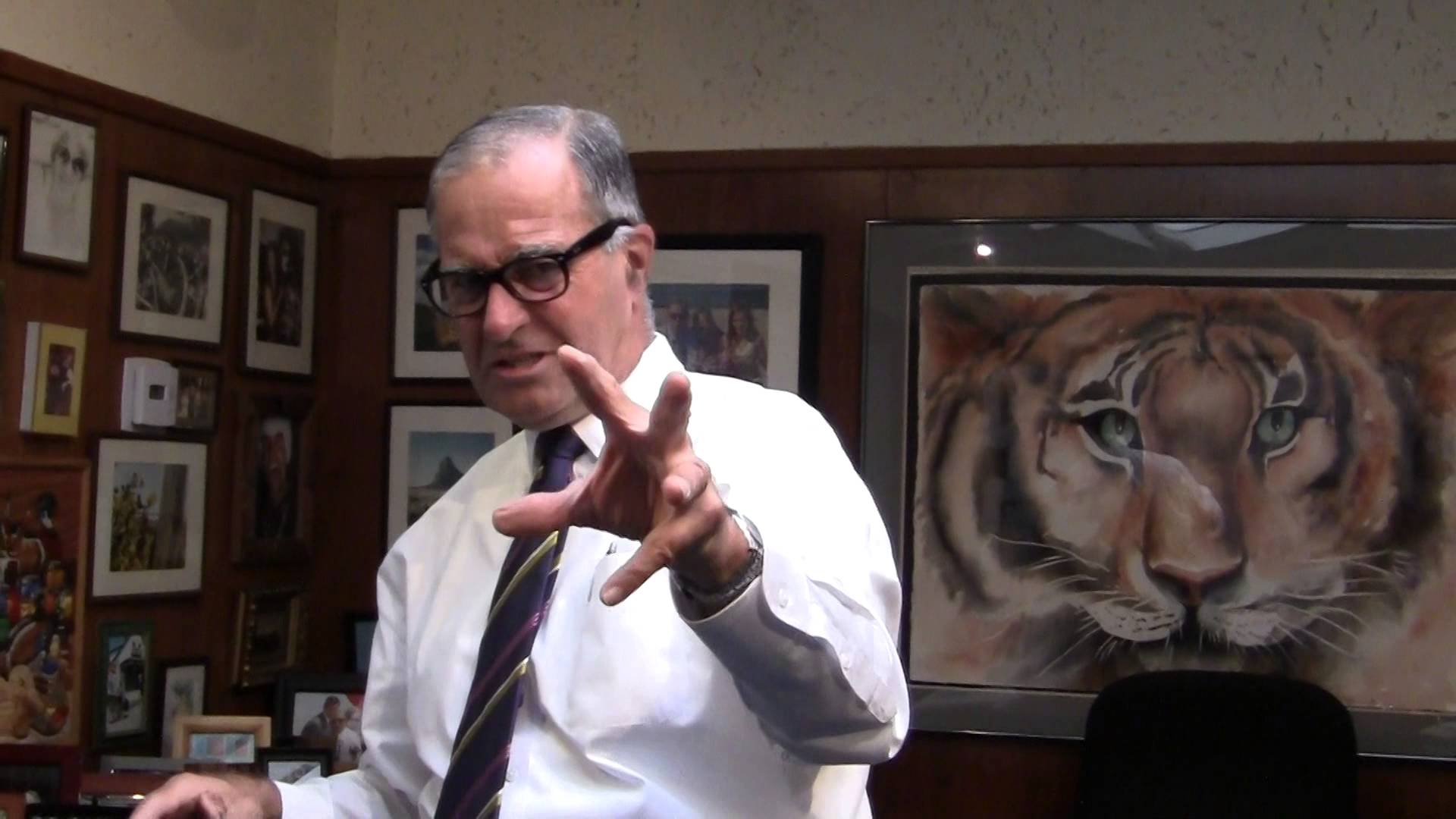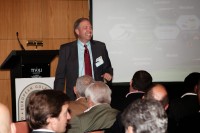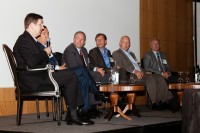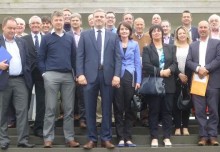Gregg Patterson, President
“Tribal Magic”
Needy
Managers are hungry for “ideas” to solve problems and create New Stuff. They’re voracious and insatiable.
Successful Managers know that “creativity” is Job One for 21st century professionals, the “distinguisher” in a competitive world filled to overflowing with technicians and data gatherers. And Successful Managers know ideas “happen” when they gather The Team, release The Team’s creative juices and capture the ideas that gush forth from The Group’s Collective Mind.
Releasing “Group Think” is the key to finding The New and The Innovative. “Group Think” requires Round Tabling— a facilitated, directed, goal oriented, interactive, small group networking experience—that releases group creativity, builds relationships and makes idea generation FUN!!!
Successful managers have Round Tabling in their genes. They find excuses to Round Table during staff meetings, committee meetings, Board meetings and user forums. When ideas are needed, successful managers start Round Tabling.
In this dog-eat-dog world, managers need answers to tough operational and strategic questions. Round Tabling’s the answer.
Here’s the template for making Round Table happen.
 Step One—Find “The Master Facilitator”:
Step One—Find “The Master Facilitator”:
Round Tabling doesn’t “just happen.” Someone needs to initiate, direct, enlarge and sustain the Round Tabling experience. This person—The Master Facilitator—identifies The Issues, assembles the right “contributors”, stimulates the discussion, “grows” the ideas that surface, generates The Buzz and creates a checklist for making the ideas generated—happen. Finding the right Master Facilitator is Job One.
Step Two—Identify Issues and Opportunities:
The Master Facilitator must identify a compelling reason to Round Table —a problem to be solved, a question to be answered. Before the Round Table-ers are gathered and the Collective Mind starts sparking, a narrowly defined, well-articulated question is needed to bring focus and energy to the discussion.
Step Three—Find The Oven:
Round Tabling needs a location. The Space should be removed from activity yet close enough to still feel “connected” to the operational hum. A space that’s “a little too small” is best because “The Buzz” gets amplified and heat gets generated. The Space needs the right “aesthetics” and the right tools—quiet, a nice table, comfortable chairs, notepads, pencils, the right temperature, bottled water, high octane caffeine and soft drinks.
Step Four—Gather The Contributors:
Round Tabling needs “right focused” minds to make The Collective Mind work. The Master Facilitator needs to identify “which minds” are right and “how many minds” are needed for the question being asked.
The Right Number is easy—no more than eight, ideally six at a given table. Why so few? Because everyone will be engaged, no-one can hide, eye contact can be maintained and everyone will speak. Want more ideas from more people? Simply add more Round Table-ers and more tables.
Step Five— Select The Table Facilitator:
Each table must have a Table Facilitator. If there’s only one table to be facilitated, The Master Facilitator will be The Table Facilitator. If there are multiple tables, then each table will need its own Table Facilitator. The Table Facilitator’s job is critical—he or she must clearly articulate The Question, ask pointed questions, make continuous eye contact, listen attentively, stimulate conversation, validate each contributor’s ideas, “enlarge” the ideas presented and add a buzz to the experience. Done right, The Table Facilitator will release the group’s creative juices.
Step Six—Assign The Table Recorder:
If the Round Tabling’s done right, ideas will flow—and each of these ideas needs to be written down and memorialized for future use. A Table Recorder is needed, someone who’ll write down every idea, no matter how loopy or conventional, without bias! No filtering is allowed, no “that won’t work” is permitted. The Table Recorder is responsible for capturing ALL the ideas tossed out regardless of who said what or what was said.
Step Seven—The Contributors:
The Round Table-ers were selected because they’re thinkers and talkers and have a personal interest in—or knowledge of—the Round Tabling topic. Everyone who’s “at the table” is responsible for contributing to the conversation and making “Creative Heat” happen. The Collective Mind works brilliantly when every participant is coughing up ideas and fully engaged in the dialogue.
The Table Facilitator is responsible for stimulating the Contributors. He or she needs to ask EVERYONE questions, listen to answers, enlarge on what’s said, challenge the Contributor’s comments and then validate the Contributor’s contribution regardless of the quality of the comments made.
Step Seven—Timed “Ponder Time”:
The Master Facilitator must establish an “end time” for discussion. Knowing “how much” is more art than science and is dependent on the subject being discussed, the table’s familiarity with the topic, the Table Facilitator and the Contributors involved.
However, there are “Ponder Time” guidelines. “Speed Round Tabling”, which involves no more than ten minutes of “ponder time”, should be used when there are lots of tables, lots of topics, limited time or when high octane interactive “toss this on the table now” Buzz is needed. “Normal Round Tabling” of fifteen to twenty minutes should be used if the group’s filled with “first timers”, the subject’s complex or detailed tactics need to be generated.
Step Eight—No Escape:
Some Round Table-ers will be tempted to “escape” the space and take their table elsewhere for uninterrupted “ponder time.” NO CAN DO!!! Doing so diminishes The Heat in the room, reduces The Buzz and tempers the free flow of ideas. “Compression” warms the Collective Mind and gets Contributors “cooking.”
Step Nine—Going Public—Part A—Assign The Master Recorder:
If there’s more than one Round Table, a Master Recorder is assigned. Their job will be document the ideas generated by each of the tables and to “memorialize” those ideas for the future. Again, The Master Recorder records ALL the ideas generated—without bias—and distributes them to The Contributors for further pondering.
Step Nine—Going Public—Part B—Stand, Deliver and Get Facilitated:
If there are multiple Round Tables and when the Ponder Time’s over, someone (usually the Table Facilitator or Table Recorder) from each of the Round Tables stands, speaks and “delivers” the ideas generated by The Table. The Master Facilitator will “enlarge and enrich” the discussion by asking questions and providing commentary on the issues raised.
Note—most groups list “principles” rather than “practices” and the Master Facilitator’s job is to keep asking questions until TACTICS are identified which “flesh” out the principles.
If there’s a single Round Table, the Table Recorder will review the ideas generated, the Table Facilitator will stimulate further discussion and the Recorder document comments raised during the “post generation” discussion.
Step Ten—Do and Review:
When the talking’s done, the Master Facilitator asks The Round Table-ers to prioritize the ideas generated and to identify a timeline for their implementation. S.M.A.R.T. assignments are given—Specific, Measurable, Achievable, Relevant and Time related.
The Round Tablers are then re-assembled periodically to address the actions taken to execute the ideas raised during the round tabling session.
Start Round Tabling:
Everyone has “problems” and “opportunities.” Ideas are needed to solve the problems and to take advantage of the opportunities. Ideas are generated using the Collective Mind and The Collective Mind is best realized through Round Tabling.
Round Tabling is an Idea Engine. Cheap. Fun. Effective.
Round Tabling works.
Give it a try.
And enjoy the journey…………………


 Step One—Find “The Master Facilitator”:
Step One—Find “The Master Facilitator”:



